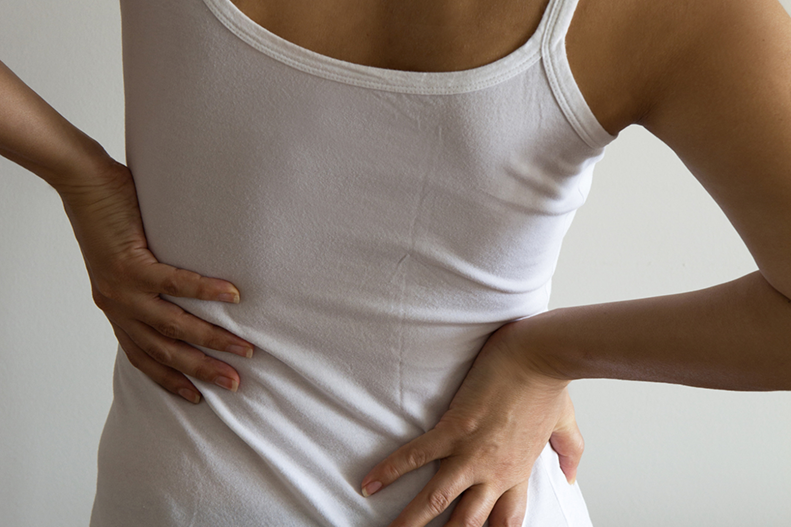Back pain is a common complaint for many Americans. In fact, at any given time, more than 30 million Americans experience low back pain. Fortunately, some back pain is avoidable with a few simple lifestyle adjustments.
Gwendolyn Sowa, MD, PhD, lists five common contributors to back pain and tips on how to avoid them.
1. Sedentary Lifestyle
The amount of physical activity the average person receives has decreased. Americans spend an average of seven to nine hours at a desk, five days a week. An increasing amount of time is spent hunched over computers and other technologies, causing pain in the back and shoulders.
Dr. Sowa recommends staying active as much as possible during the work day and paying attention to your posture. Sit up straight with shoulders back, or consider sitting on a large core exercise ball.
Never Miss a Beat!
Subscribe to Our HealthBeat Newsletter!
Thank you for subscribing!
You can now select the specific newsletters you'd like to receive.
You are already subscribed.
Subscribe to more newsletters in our email preference center.
Sorry, an error occurred. Please try again later.
Get Healthy Tips Sent to Your Phone!
2. Lifting
Even if the object doesn’t appear heavy, improper lifting techniques can result in back strain and pain. Rushing to pick up an item or underestimating its weight when trying to lift it can lead to an increased risk of injury.
Dr. Sowa recommends bending your knees, holding your core muscles tight, avoiding twisting, and maintaining good posture while lifting. Always ask for assistance when needed.
3. Weight
Being overweight, especially if you carry the weight in your midsection, can add to the strain placed on your body — particularly your back and spine — contributing to low back pain.
Dr. Sowa suggests shedding extra pounds through better nutrition and increased physical activity. It’s important to know that even if you don’t see a change on the scale, your pain may decrease.
4. Smoking
Not only is smoking connected to an increased risk of developing heart disease, stroke, and lung cancer, studies also show an increased occurrence of back pain.
Dr. Sowa recommends working with your doctor to quit smoking. Smoking cessation may result in improved health overall and a reduction of chronic back pain.
5. Mood
Recent studies have shown a connection between back pain and depression and anxiety. This doesn’t mean the pain you might be experiencing is made up, but rather there is a physiological link between the pain you are experiencing and the depression or anxiety.
Dr. Sowa recommends seeking treatment for the depression or anxiety you are feeling. It is possible that when you treat those the back pain will decrease.
Consult a doctor any time moderate to severe pain is present, or if the back pain is accompanied by new weakness, numbness, or bowel or bladder changes.
Editor's Note: This article was originally published on , and was last reviewed on .
About Physical Medicine and Rehabilitation
At UPMC, we strive to improve your function after injury or illness. We help people recover from functional, pain-related, and neurological conditions, with both inpatient and outpatient care available. We are dedicated to providing you with exceptional clinical care and focused on developing new technologies and treatments to help you achieve mobility and maintain independence. Find a provider near you.

